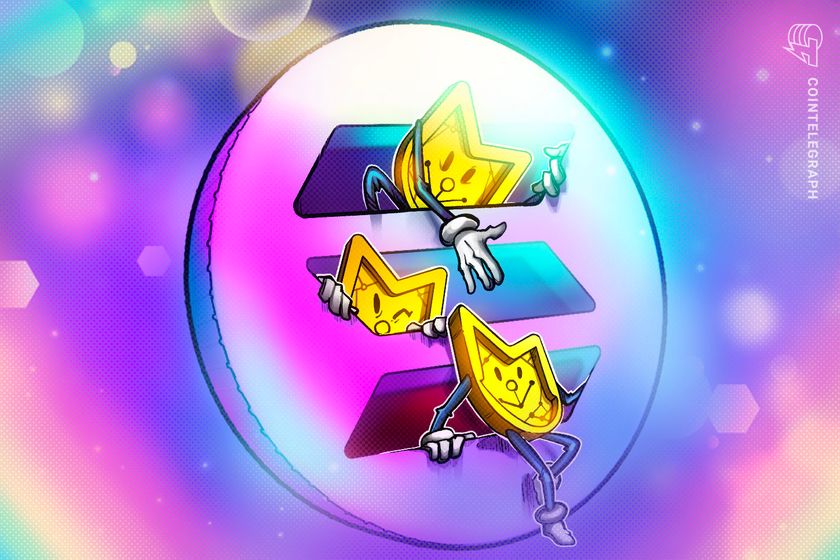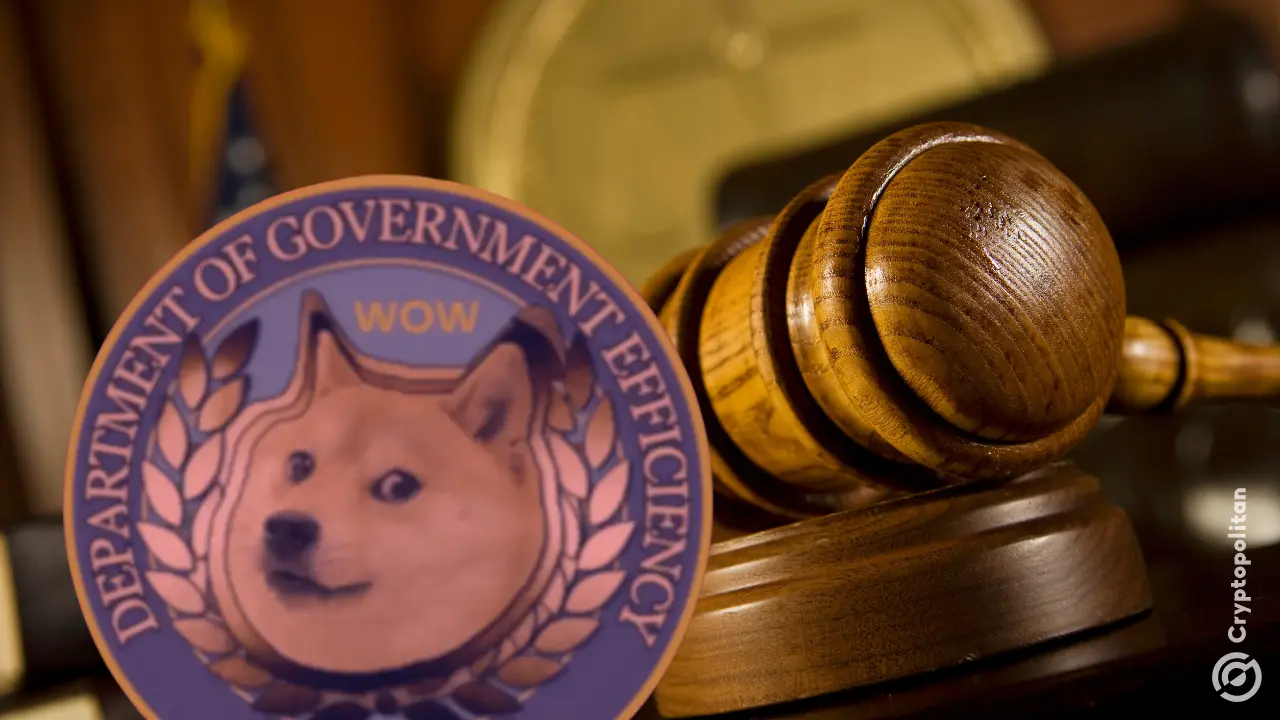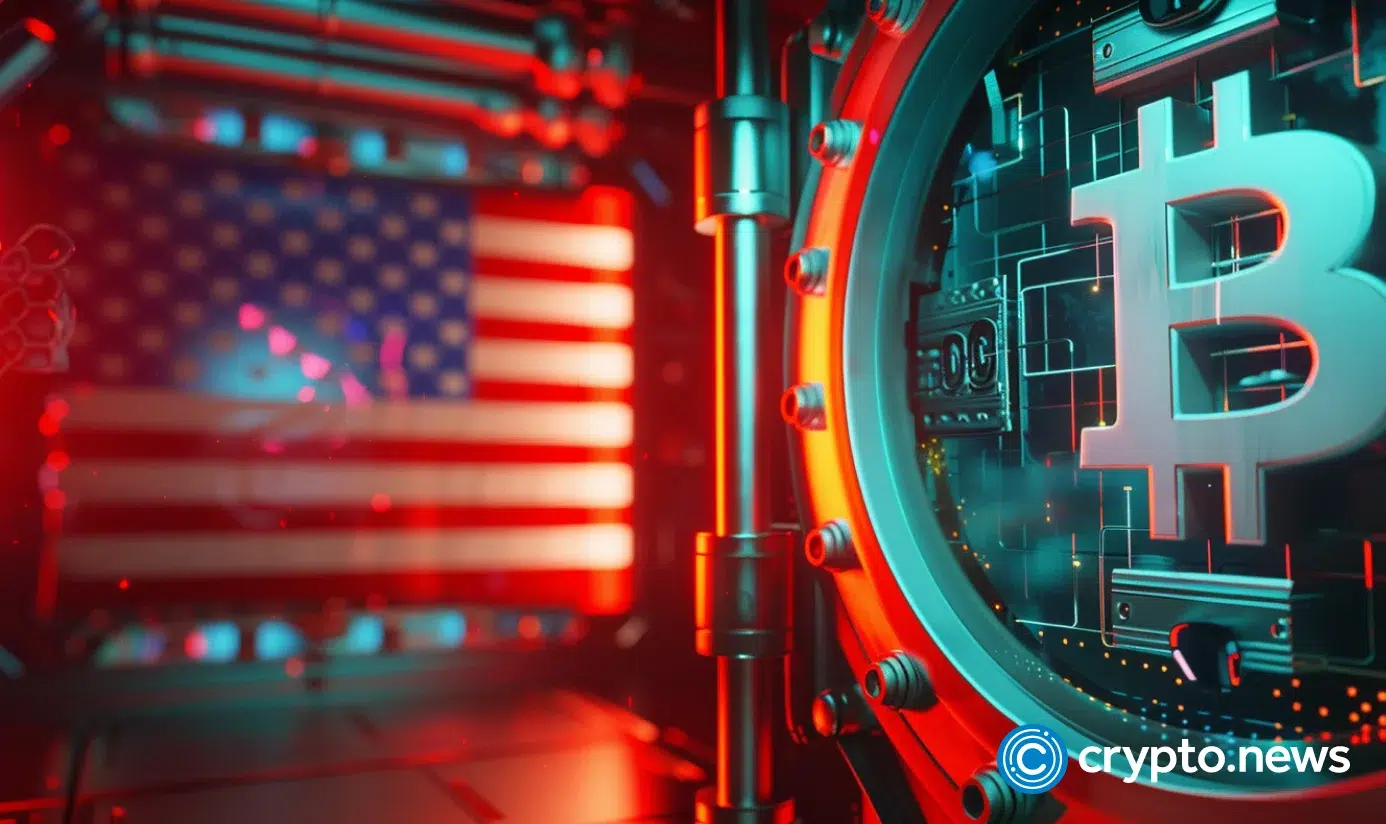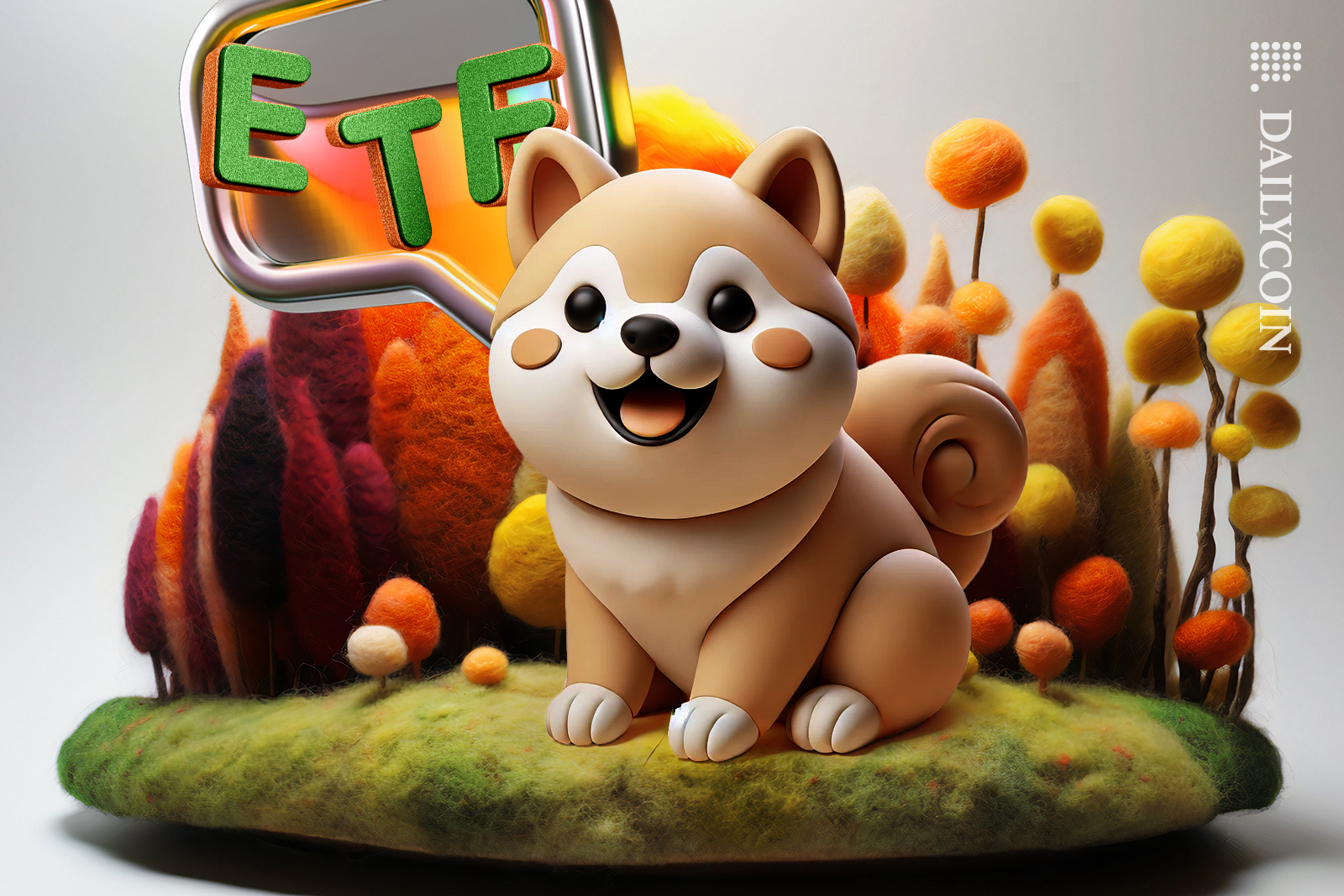Memecoins are a prevalent part of the overall crypto ecosystem. Some memecoins, such as Pepe With such a buzz around memecoins, many may wonder how to create them on blockchain networks like Solana. This Solana token creation tutorial will cover creating a memecoin on the Solana blockchain, discuss the fundamentals of a memecoin, and explain how to market it. A memecoin is a cryptocurrency with little intended value. Rather than providing financial utility, such as the Ethereum network’s capacity to host decentralized applications, a memecoin exists to capture a moment in popular culture. For example, Shiba Inu’s creator built it simply because the Shiba Inu dog breed is a popular meme. Memecoins that become popular may eventually gain utility in the decentralized finance (DeFi) space. Many online stores now accept Dogecoin — one of the most popular memecoins — in exchange for goods and services. Coinbase Commerce, a payment processing service, began accepting DOGE in 2021. While everyone invests for different reasons, users typically invest in memecoins because they start out at a low value or because the investor finds the meme funny. However, investors have fallen victim to memecoin pump-and-dump schemes, losing thousands of dollars in the process. It’s important that investors only invest what they can afford to lose. Memecoins may be built on existing networks like Ethereum, BNB Chain or Solana, though some projects, such as Dogecoin, have their own blockchain networks. Users can create a memecoin without knowing how to code or develop software. Services like the Orion Tools decentralized application (DApp) allow the creation of coding-free tokens. In the case of Solana, users must abide by the Solana token standards. Creating a successful memecoin on the Solana blockchain requires some forethought. When deciding which meme to pick to create a memecoin, it’s best to do some research. Is the meme popular enough to warrant a token? Does it have a dedicated subreddit or other online community? Is it referenced by big YouTube videos or used by the general public? If so, it’s probably a good option for creating a memecoin. Is there a larger plan in place? If a user intends for their memecoin to have utility beyond a simple investment, it’s best to create a white paper or website that details its tokenomics and future plans. This validity will help grow a dedicated community, as they’ll have a plan to rally around. Cryptocurrency development can be a lengthy endeavor. Creating the token is just the start. Users must market it, monitor a growing community and eventually create utility. These processes require dedication and, in some cases, a deep understanding of the Solana blockchain development ecosystem. There are various token creation applications and extensions for creating a memecoin on Solana. Many allow users to avoid smart contract development and build a memecoin without development knowledge. Users should be wary, as a few scam token creation services exist. This guide will cover the Orion Tools Solana token creation platform. To start, users must acquire a Solana wallet. One of the most popular Solana wallets is Phantom Wallet. Upon acquiring a wallet, head over to the Orion Tools DApp and navigate to their token creator. The token creator provides some Solana tokenization details to fill out, such as the token’s name, its symbol and its total supply. After inputting the name, users should input the token symbol and their desired decimal count. Token creators that want a larger token supply should have a lot of decimals. When listed on an exchange, the symbol provides a memecoin with a ticker for easy identification. Otherwise, Orion recommends having nine decimal points for a meme token. The next step is to input the desired supply and token image. Token supply dictates how much of a token actually exists. Then, the user needs to create a token description — a short few sentences describing the token’s use case. Once the Solana token standards are in place, the token creator must click “Create Token.” A wallet transaction confirmation detailing the transaction and its transaction fee will appear, which must be paid in Solana’s Now that the token is created, if a user wants to create a liquidity pool, they must use the “Create a Liquidity Pool” tool below the “Create Token” tool they just finished with. They can simply select the created token and click “Revoke Freeze Authority.” This will cost another transaction fee, but it allows the creator to retain control over their asset. However, liquidity pools are necessary for long-term projects, as they allow traders to acquire the token. It’s also best to click “Revoke Mint Authority” to secure the Solana token minting process, preventing others from minting the token, which will charge yet another transaction fee. Finally, after the transactions are cleared, the created token will appear in the connected wallet. Now that the token is created, the creator can build a liquidity pool or market for their asset using Raydium or Invariant or share their token privately with friends. Creating a liquidity pool enables anyone to trade the token and is a popular choice for many involved in memecoin creation. After creating a memecoin, users likely want to build momentum before its Solana token deployment on an exchange. There are a few ways to do this. Most memecoins have their own Telegram or Discord channel to promote news around the token and make announcements. A Telegram or Discord channel is a free way to bring awareness to a memecoin and serves as a space for users to discuss and ask questions about it. Promoting a memecoin on platforms like X or Reddit can help grow its community and inform users of its Solana token issuance date. For example, creating unique memes and posting them on relevant meme subreddits might draw attention to the project. If the token creator has the funding to pay for it, they can promote their memecoin via influencers. Influencers and memes tend to go hand in hand, and if the memecoin is based on a large enough audience, one should have no problem partnering with an influencer or two. Creating a profitable memecoin is highly uncertain and not specific to Solana’s token economics. While popular memecoins like DOGE have seen success, most do not achieve significant profit. Profitability often hinges on effective marketing, a strong community and a compelling meme that resonates with a broad audience. The inherent volatility and unpredictability of cryptocurrency markets further complicate the potential success of a new memecoin, making it a risky venture. Bitcoin bridge XLink announced on May 20 that it is partnering with Kaamel Technology as part of its first major initiative to investigate a recent security breach. According to a post on X, XLink has “accelerated” collaborations with Ancilia and Cobo to secure the Bitcoin (BTC) bridge platform against future breaches in parallel to this partnership. XLink’s partnership with cybersecurity firm Kaamel Technology aims to thoroughly investigate “the root cause” of the May 15 breach that involved almost $10 million in user funds. According to XLink, Kaamel Technology will conduct an “in-depth investigation” and implement measures to “eliminate vulnerabilities and prevent future breaches.” Related: Bitcoin rally above $67.5K could spark new record highs, says 10x Research As part of XLink’s major initiative, the Bitcoin bridge is expediting its partnership with Ancilia Inc. to enhance “real-time on-chain monitoring infrastructure.” Ancilia alerted XLink to the recent attack, enabling the bridge provider to take suitable mitigation actions before further funds were stolen. Additional steps are also being taken in collaboration with Cobo, XLink’s BTC custodian. XLink explained that alongside partnerships with “Cobo, Ancilia, and Kaamel Technology,” its approach includes plans to announce additional partnerships in the future in efforts to “fortify [the] platform’s security.” The $10 million hack that prompted XLink’s spree of security partnership developments involved the compromise of the Ethereum and BNB Smart Chain (BSC) endpoints. The attacker withdrew around $4.3 million after acquiring private keys through a phishing scheme — but was soon foiled by a white hat hacker who recovered the stolen assets. Bitcoin layer-2 developer Alex Labs — the creator of the XLink bridge — was also exploited on May 15, with around $13.7 million in Stacks Magazine: Bybit’s Notcoin listing debacle, China firm’s profits up 12-fold after crypto buy: Asia Express Technology is shaping the future of numerous sectors, and agriculture is not immune to the change. Blockchain-powered change is on the horizon for farmers, potentially making agriculture technology (AgTech) accessible to all. Dimitra is a global agriculture technology company that utilizes blockchain, artificial intelligence (AI) and Internet of Things (IoT). The company is founded by Jon Trask, a prominent blockchain expert with a background in enterprise software development and designing complex supply chains for multinational corporations. Trask also won the 2023 Government Blockchain Association Annual Achievement Award for Social Impact and the 2023 Web3 and Blockchain Award for Entrepreneurship. As the CEO of Dimitra, Trask shares key insights about how agriculture, especially smallholder farmers, can utilize technology to their advantage. Cointelegraph: What inspired you to start Dimitra, and how does your background influence the company’s mission and vision? Jon Trask: Dimitra was born out of a passionate conviction that technology can transform the challenges over 570 million farms worldwide face. My journey, woven through years of reshaping complex supply networks, has opened my eyes to the extraordinary ways technology can reinvent age-old sectors. It’s the hard-working smallholder farmers for whom we hope these technologies become accessible and functional. CT: How can technologies like AI and blockchain help agriculture? JT: Artificial intelligence boosts farmers’ crop management by analyzing weather, soil and plant health data, leading to smarter decisions for increased yields and eco-friendly practices. Blockchain guarantees secure and trustworthy supply chains, building trust and authenticity in agricultural transactions. These technologies combine to improve efficiency, sustainability and profitability in agriculture, empowering small farmers globally. Just recently, Dimitra successfully completed the first European Union Deforestation Regulation (EUDR) compliant coffee shipment utilizing AI and blockchain technology, demonstrating how technology supports farmers in meeting regulations, entering global markets and safeguarding the environment. CT: What’s a good example of the synergy between crypto and AI? JT: A great example of teamwork between crypto and AI shows up when crypto assets inspire data sharing in AI models for farming. Farmers can earn tokens by giving important agricultural data, such as crop yields and weather patterns, to AI programs. This support encourages many people to get involved and share data, making AI models more accurate and better at predicting. As a result, farmers get more precise advice and tips for managing crops, which helps increase productivity and sustainability in farming. CT: What specific advantages do decentralization and transparency bring to the supply chain in agriculture? JT: Decentralization in the agricultural supply chain simplifies and makes processes cheaper. At the same time, it helps make it stronger by sharing control across multiple stakeholders, reducing the risk of problems happening in just one place. It also welcomes small farmers to be part of the supply chain, promoting fairness in trade and helping them reach expanded markets. Being transparent about where products come from builds trust by showing how food travels from farms to the table, preventing fraud and making sure quality and safety standards are met. Overall, decentralization and transparency make the agricultural supply chain more reliable and effective, which is good for farmers, governments, cooperatives, customers, consumers and everyone involved. CT: Could you share the journey that led to Dimitra’s formation and its mission to empower smallholder farmers with cutting-edge technology? JT: We embarked on the journey to create Dimitra with a potent vision of empowering small farmers worldwide through technology. Witnessing how farmers embrace mobile tech and cutting-edge innovations such as IoT and satellite, it became clear that we could merge these advancements with the unique needs of agriculture. While agriculture progresses at a slower pace compared to fast-moving technologies like crypto, I firmly believe that bridging these two worlds can revolutionize farming practices and provide substantial support to farmers. Leveraging technology to assist small farmers is not just essential — it will change the world. CT: How do you utilize advanced technology, including satellite tracking, AI, blockchain and crypto assets, to improve the global agriculture landscape? JT: We employ advanced technology to revolutionize the worldwide agricultural sector. Technical assistance and dissemination of knowledge are two of the biggest bottlenecks for small farmers to increase their income; the conventional process is very laborious and expensive. Through our satellite tracking system, we keep a close eye on crops and livestock, providing farmers with real-time information on weather, soil moisture and crop health. AI analyzes this data to give tailored recommendations for optimal farming methods, helping farmers increase their yields and reduce costs. By using blockchain for transparency and traceability in the supply chain and crypto assets to promote data sharing and financial inclusion, we empower farmers to make informed decisions and drive sustainable growth in the global agricultural industry. CT: Dimitra executed its first EUDR-compliant shipment. Could you briefly explain what EUDR is and why it’s crucial for agriculture? JT: EUDR certification plays a vital role in agriculture as it assures that shipments come from deforestation-free areas and adhere to stringent environmental standards. Our technologies are crucial in achieving this by providing transparent and traceable supply chains. Through the use of satellite tracking and blockchain technology, we can accurately document and confirm each phase of production, from the farm to the market. This empowers farmers to showcase the sustainability of their practices and guarantee that their shipments comply with deforestation-free requirements, enhancing their market opportunities and bolstering consumer trust in agricultural products. CT: How does Dimitra help smallholder farmers with EUDR compliance? JT: Dimitra helps smallholder farmers follow EUDR rules by providing special digital tools. Our platform lets farmers accurately track their work, ensuring transparency in the supply chain. By using satellite tracking, AI analytics and blockchain technology, we support farmers in managing their activities to meet EUDR standards in a much cheaper way than pursuing a conventional certification. Additionally, our training programs prepare farmers to meet and maintain compliance rules. Our EUDR module measures levels of deforestation, comparing the EU’s deforestation cutoff date at the end of 2020 to the current forest state of the farm to demonstrate that the farmer hasn’t violated any rules. CT: How does Dimitra ensure its innovations meet the real-world needs of smallholder farmers? JT: Engaging directly with smallholder farmers is crucial to adopting new technologies. Our partners, like cooperatives and local organizations also play a crucial role in building a relationship of trust with farmers. Dimitra ensures that our innovations truly meet their needs by prioritizing accessibility with the DMTR token. Even though some farmers don’t even understand how tokens work, they understand the concept of earning and buying points to exchange for products and services. And so, through services and technologies that they previously did not have access to, we are building an increasingly larger base of farmers who benefit from the DMTR ecosystem. When farmers stake DMTR tokens (points), they can easily use all our agricultural technologies, which help them improve crop management and make their supply chain more transparent using AI analytics and blockchain solutions. This token system makes it fair for all farmers to access advanced technology, so even those with limited resources can get helpful insights and enhance their farming methods for long-term success and prosperity. CT: How does Dimitra’s technology promote sustainability and help farmers adopt more eco-friendly practices? JT: Technical assistance is crucial so that producers know how to produce more and better in the same area, making better use of available natural resources and turning degraded areas into productive areas. It is in this scenario that our AI and DMTR tokenholders play a key role in supporting sustainability on small farms worldwide. By staking their tokens, they encourage farmers to use eco-friendly practices such as reducing water and pesticide usage, enhancing soil quality and preserving biodiversity. These tokens offer a tangible way to recognize and incentivize farmers for their efforts in sustainability, promoting the adoption of environmentally friendly techniques. Through their support, DMTR tokenholders help small farms operate sustainably, promoting resilience and long-term success in agricultural communities around the world. CT: What are some upcoming technologies at Dimitra that you’re particularly excited about, and how will they continue to push the boundaries of what’s possible in Agtech? JT: I am thrilled about Dimitra’s upcoming projects and technologies that will transform Agtech. One exciting initiative includes AI forest monitoring in our Dimitra Connected app, helping farmers comply with environmental regulations like the EUDR by spotting deforestation issues. Our DMTR token’s improved usefulness will make high-tech tools and market information more accessible to farmers and entrepreneurs worldwide. Using nonfungible tokens (NFTs) and real-world assets (RWAs), we are digitizing real agricultural assets, like trees, to offer financial support for small farms and encourage sustainability globally. Making carbon credit projects available to small farmers and encouraging environmental, social and governance (ESG) practices in agricultural organizations are also on our roadmap. These efforts show our dedication to pushing Agtech boundaries, supporting sustainability and empowering farmers to succeed in the changing agricultural world.
How will this information affect you?
The information provided in the blog post about creating memecoins and the partnership developments in the cryptocurrency space can affect you as an investor or someone interested in blockchain technology. Understanding the process of creating a memecoin on the Solana blockchain and the importance of security in the cryptocurrency ecosystem can help you make informed decisions about investing in or creating digital assets.
How will this information affect the world?
The advancements in agriculture technology utilizing blockchain, AI, and IoT, as discussed in the article, can have a significant impact on the world. By empowering smallholder farmers with cutting-edge technology, companies like Dimitra are promoting sustainability and eco-friendly practices in the agricultural industry. This can lead to improved efficiency, transparency, and profitability in agriculture, benefiting both farmers and consumers globally.
Conclusion
In conclusion, the blog post highlights the process of creating memecoins on the Solana blockchain and the importance of security in the cryptocurrency space. Additionally, the discussion about advancements in agriculture technology and how companies like Dimitra are using blockchain, AI, and IoT to empower smallholder farmers showcases the potential impact of technology on sustainability and eco-friendly practices in the agricultural industry. Understanding these developments can help individuals make informed decisions about investing in digital assets and supporting innovations in agriculture.

